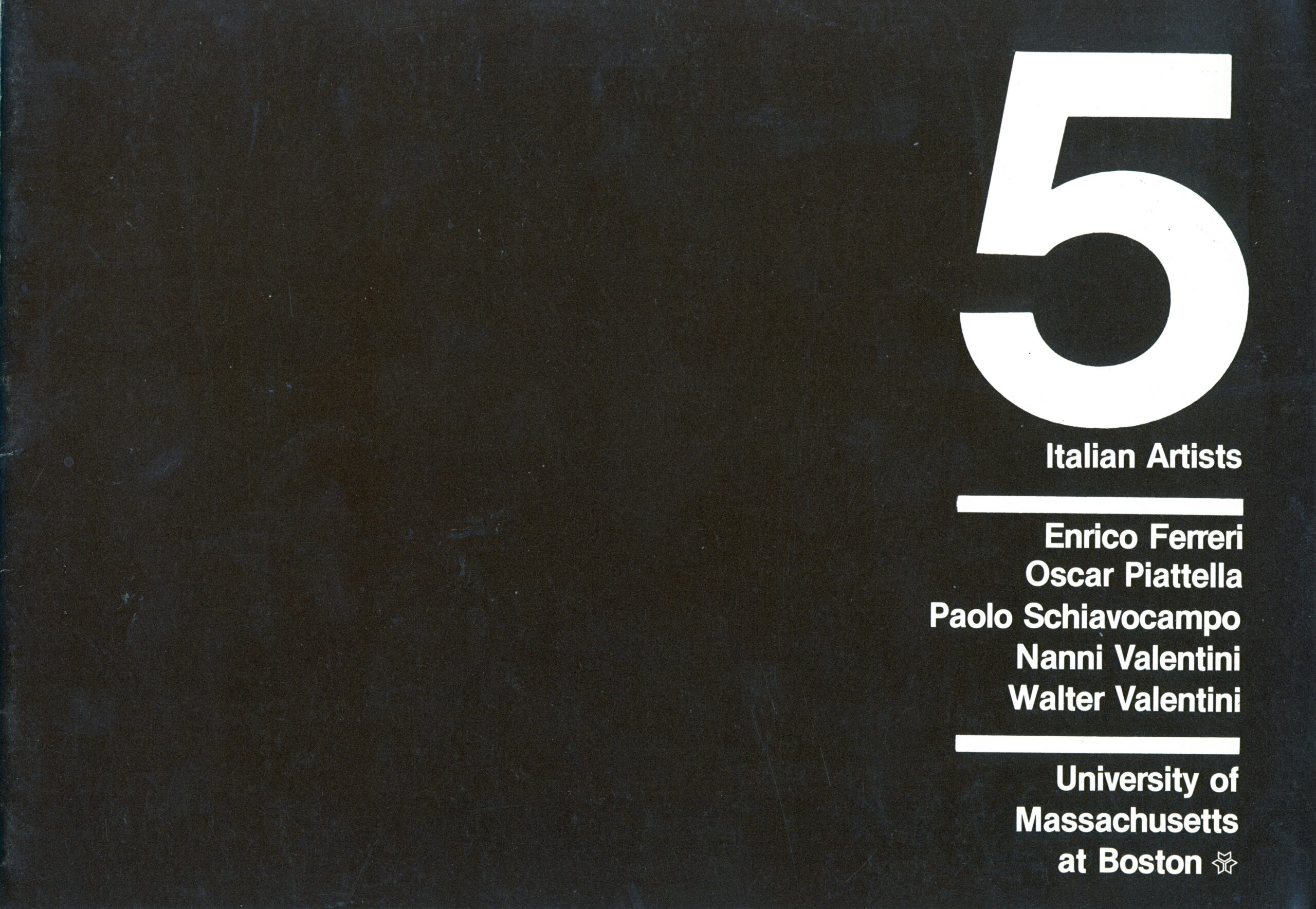In: Five Italian Artists (Enrico Ferreri, Oscar Piattella, Paolo Schiavocampo, Nanni Valentini e Walter Valentini), exhibition catalogue, Harbor ART Gallery, University of Massachusetts, Boston, MA, USA, 1979.
In the central Appennini mountains, where I was born, as well as in other regions where the landscape is uneven, the ruins of towers are a familiar sight. These ruins are not an accident of history, even if their presence may provoke mental navigations across archeological distances as well as other images. Their function is to create an uninterrupted line of vision: from every tower can be seen the ones preceding and following. When the air thickens with vapors, the fog between towers is thick enough to be registered and traversed by the senses, a veritable module of the sight. I see in this image the temptation of not letting continuity escape the desire to respond to the expectation of its own prophecy (image of the continuous).
My work is directly inspired by this see-reflected object. It consists of a line which modulates its own route with things that, like the towers, are not meant to be objects but rather points, projected as references of spatial sections.
The material and the expressive technique that I prefer is ceramics, specifically fired clay. Just as stone binds the tower to its milieu, thus becoming manifestation and rhythm of the place, so in my intent clay becomes stamp and manifestation of a continuum. In fact, if we consider certain aspects of its possible symbolic content, we find in the Earth Mother the myth of the Son Forefather: ancestors similar to a being preserved in the earth until its ultimate manifestation. Clay can be considered the trace of the continuity of the river, transported by water, clay is deposited in bends of the river, is decanted and becomes the most filtered part of the earth. Fired clay can be imagined as the central moment of a water-fire dialectic, or as material of the vase or as material that binds both the centrifugal and the centripetal.
The Cretan vase on which is painted a polyp which is attempting to reach the horizon that turns to infinity around its own axis is perhaps the most pregnant image. This line is closed by a piece of scrap iron (the thing noted); its trace is projected on a canvas like a sign (the thing drawn); it is transformed into a diagonal when it crosses a progression of layers of fired clay (the thing transformed); thence it passes into the positive-negative, concave-convex duality; it is precisely in the concave that the line is immerged in water (the thing colored). The container of water has as its opposite pole the platonic tetrahedron which bears the trace of water understood as a level. The line finally touches as convex cap, becomes tangent and continues to infinity.
There is a two-way link between my laboratory and the place where my work will be exhibited. The ceramic material which I have used is a refractory mixture baked at a temperature of 1250 C. The technique of baking is that of “reduction”.
My other works are studies, extensions of the same theme: the “line”, which here takes the form of various horizons. The line becomes trace, sign and surface depending on the substance it encounters. The line is temporality, the material object of sight. The horizon cannot be fixed but rather seen as a mobile strategy of the glance.
The thought that subtends my work leads me to believe that the void, like silence, cannot do without its own object, and that art, like poetry, is a cosmos where archeology is without memory and where things disperse meanings. One of my friends, a poet, says: “There is no depth in poetry, there is only the fearful insomnia of the surface”.




